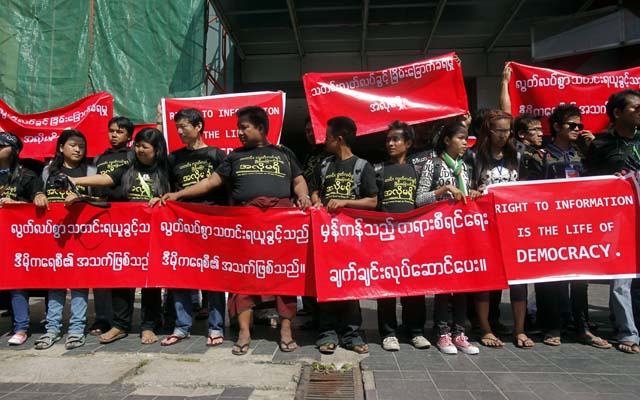Southeast Asia and Its Press Freedom Woes
Olivia Enos /
A Burmese court recently sentenced a journalist to jail for purported defamation, coarse language, and trespassing. The journalist, Ma Khine, was reporting on corruption and video piracy when she allegedly got into an argument during an agreed-upon interview with lawyer Aye Aye Phyo, who asked her to leave his home and later filed suit against her.
The issue with Khine’s sentencing has as much to do with her punishment as her conviction. Many journalists are now saying that the court falsely used Khine as an opportunity to scare journalists with a prison sentence, when her crimes would have ordinarily been treated with a minor fine.
While Burma’s press freedom has improved in recent years, this latest sentencing is representative of an ongoing program in Southeast Asia.
According to The Heritage Foundation’s publication “A New View of Asia,” all but two Southeast Asian nations fail to protect freedom of the press. The two exceptions—Indonesia and the Philippines—are still considered to only have a partly free press.
[insert chart]
The chart reveals that Singapore, the most economically free and prosperous nation in the region, guarantees less press freedom than the Philippines, Indonesia, Thailand, Malaysia, and Cambodia. Only Vietnam among Southeast Asian countries fares worse.
Interestingly, media freedom and freedom of expression are often enshrined in the constitutions of many Southeast Asian nations, including Cambodia, Indonesia, and the Philippines. However, several of the countries have companion laws focused on press freedom that undermine the guarantees in their constitutions. For example, several Southeast Asian nations have defamation laws that enable governments, with minimal proof, to press charges against journalists attempting to provide alternative opinions.
In 2012, 88 journalists were killed worldwide. Seven of them were from Southeast Asia. The largest number of extrajudicial slayings of journalists in Southeast Asia occurred in the Philippines.
Politically motivated killings are not uncommon in Southeast Asia, especially when journalists are whistling to a different tune than the ruling government. One of the most notable events in 2012 was the murder of environmental journalist Heng Serei Oudom in Cambodia, who was writing on the illegal logging industry when he was kidnapped and later found mutilated and dead in his car.
While the imprisonment of Khine is likely unjust and yet another demonstration that Burma has a long way to go to achieving good governance, it is a positive sign that countless Burmese journalists feel comfortable taking to the streets to express their concern about the sentencing. Other Southeast Asian nations should take heed of protests in Burma now and seek to establish greater freedom of the press in their own countries for the future.

